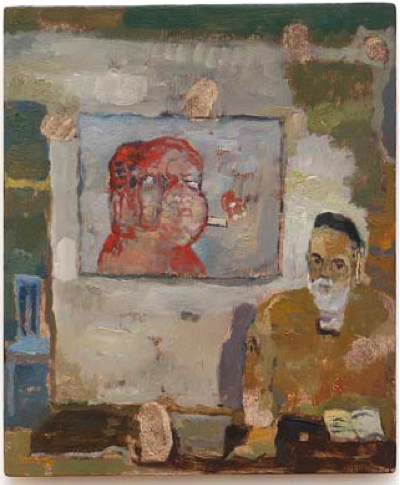
REVIEW
Anthony Dubovsky at Cue Art Foundation
Art in America, April 2006, p. 159:
Full PDF
This ten-year survey of paintings by the Californian Anthony Dubovsky, curated by the artist Christopher Brown, was virtually, if not actually, Dubovsky’s first solo show in New York. (There was an earlier show, sparsely attended, at Yeshiva University Museum in 1994, and another of photographs at Light Gallery in 1978.) At Cue, Dubovsky was revealed to be a major artist working at a small scale, producing paintings of concentrated intensity large in sensual and intellectual pleasures. The exhibition consisted of three groups of paintings: 12 on masonite, ranging in size from 12 by 10 to 18 by 16 inches; 79 on cardboard, none larger than 8 by 10 inches; and a series of six smaller abstractions, also on masonite, titled “After Chuang Tzu”
The 12 extremely beautiful paintings on panel, which were painted between 1995 and 1999, are the most consciously composed. Subjects vary, but each painting seems to hold a potential narrative suggested by its title. Several titles, including A Gorky Room, For Auden, After Kertész and The River Merchant’s Wife, invoke admired historical figures or cultural icons. Images of travel, separation and riverbanks are common to many of these works. The Gypsy Bride has the aura of a folk song. In a wooded landscape, a couple and a bearded man are separated by a bright vertical bar (a river?) in which a distant white horse is seen. Dubovsky’s quavery touch and rich, subtle colors are very seductive. The paintings don’t look like anybody else’s, though artists as disparate as Bonnard and Ryder come to mind. A few strange floating circles appear here and there on the surfaces, adding a mysterious radiance, like glints of light in front of the image or floaters caught in the viewer’s eye. These, on examination, turn out to be the artist’s fingerprints. At times they relate to the image: thematically in the case of Self-Portrait with Guston; visually in the case of The Road of Life (Lake Ladoga, 1941- 42), where they repeat, in the sky, the motif of a row of headlights of Jeeps crossing a frozen lake.
Dubovsky’s father emigrated to this country after fighting (as a teenager) in the Russian Civil War. Born in 1945, Dubovsky grew up in history-starved San Diego, left home at 16 to study in Buenos Aires, and has since lived for short periods in Russia, Poland, the Netherlands and Israel, always returning home to California (he teaches at UC Berkeley). Yet his work is suffused with an exile’s yearning. In the 79 works on cardboard, particularly, one finds a love of cultural variety. It is almost as if Dubovsky is trying to catch and preserve images of all the most beautiful things and feelings in the world and is cannily hiding them in plain sight on the most humble and impermanent of materials. The series was begun, apparently, on pieces cut from cardboard boxes, but after Dubovsky realized the ephemeral nature of that material, he started to work on archival (gray) corrugated board that he wittily distresses, cuts and paints to look like ordinary card- board. Here, painted with virtuoso offhandedness and fluid precision, are details from Chinese paintings, portraits of blues singers and jazz musicians, landscapes from the Sacramento delta, elegant quotations from paintings by Sisley, Bonnard, Boudin, Henri and others, a San Diego surfer, carp in a pond, Trotsky in the snow and so much else. Chuang Tzu was the Taoist philosopher who could not be sure whether he dreamed he was a butterfly or was a butterfly dreaming he was a person. In the series of abstractions “After Chuang Tzu,” small colored rectangles float across translucent brown painterly washes, lik thoughts hovering at the edges of the mind.
—Nathan Kernan, Art in America


Anthony Dubovsky: Self-Portrait with Guston, oil on panel, 12 by 10 inches; at Cue Gallery.